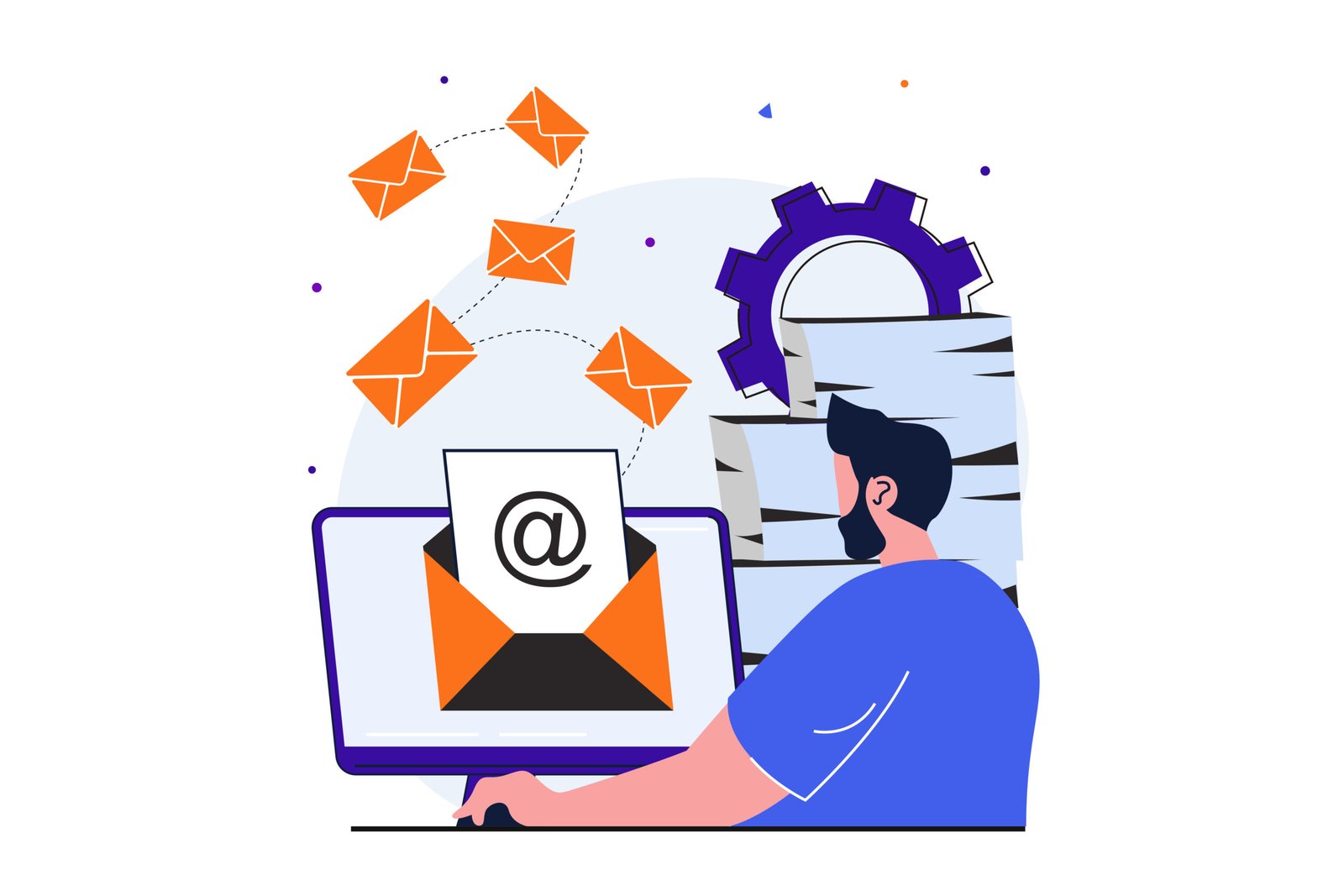Email marketing remains one of the most powerful tools in a marketer’s arsenal. When done correctly, it can drive engagement, boost conversions, and build lasting relationships with your audience. This guide will cover the essentials of crafting effective email campaigns, including how email marketing works, choosing the best service, and optimizing your strategies for success.
How Email Marketing Works
Email marketing involves sending targeted messages to a group of people via email. Here’s a breakdown of how it works:
- Building an Email List: Start by collecting email addresses from interested individuals through sign-up forms, lead magnets, or customer transactions.
- Creating Campaigns: Develop email campaigns based on your goals—whether that’s promoting a product, sharing updates, or nurturing leads.
- Sending Emails: Use an email marketing service to send your messages to the recipients. These platforms manage delivery and ensure your emails reach inboxes.
- Tracking Performance: Monitor metrics such as open rates, click-through rates, and conversions to assess the effectiveness of your campaigns.
- Analyzing and Optimizing: Use the insights gathered to refine your strategies, improve content, and enhance future campaigns.
Why Email Marketing is Important
Email marketing is crucial for several reasons:
- Direct Communication: Email allows you to reach your audience directly in their inbox, which can lead to higher engagement compared to other channels.
- Cost-Effective: It’s relatively inexpensive compared to other marketing channels, especially when considering the potential return on investment.
- Personalization: Emails can be tailored to individual preferences and behaviors, making your messages more relevant and impactful.
- Measurable Results: With detailed analytics, you can track the performance of your campaigns, making it easier to measure success and make data-driven decisions.
- Nurturing Leads: Email marketing is an effective way to nurture leads through the sales funnel, keeping your brand top of mind and encouraging conversions.
Tips for Crafting Effective Email Campaigns
1. Segment Your Audience
Segmentation involves dividing your email list into smaller groups based on criteria such as demographics, purchase history, or engagement levels. This allows you to send more relevant and personalized content.
- Behavioral Segmentation: Target users based on their actions, like recent purchases or website visits.
- Demographic Segmentation: Tailor messages based on age, gender, location, or other demographic factors.
- Engagement-Based Segmentation: Create segments based on how often users interact with your emails, allowing you to tailor messages accordingly.
2. Write Compelling Subject Lines
The subject line is the first thing recipients see and can significantly impact open rates. To create compelling subject lines:
- Be Clear and Concise: Ensure your subject line communicates the main benefit or purpose of the email.
- Create Urgency: Use phrases that encourage recipients to act quickly, such as “Limited Time Offer” or “Don’t Miss Out.”
- Personalize: Include the recipient’s name or other personalized elements to increase engagement.
3. Optimize for Deliverability
Ensuring your emails reach the inbox is crucial for campaign success. To improve deliverability:
- Use a Reputable Email Service Provider: Choose a service like GetResponse, AWeber, or Moosend to manage your emails and enhance deliverability.
- Maintain a Clean List: Regularly update your email list to remove inactive or invalid addresses.
- Authenticate Your Emails: Implement SPF, DKIM, and DMARC to verify your email domain and reduce the chances of being marked as spam.
4. Design Engaging Content
Create visually appealing and engaging content by:
- Using Responsive Design: Ensure your emails look good on all devices, including mobile.
- Including Clear CTAs: Use prominent and compelling calls-to-action that guide recipients toward the desired action.
- Personalizing Content: Tailor your content based on the recipient’s interests and behaviors to increase relevance and engagement.
5. Test and Analyze
Regularly test different elements of your emails to determine what works best:
- A/B Testing: Test different subject lines, content formats, and CTAs to see which versions perform better.
- Monitor Metrics: Track open rates, click-through rates, conversion rates, and other relevant metrics to gauge performance and identify areas for improvement.
What Email Marketing Service is Best?
Choosing the right email marketing service can make a significant difference in your campaign’s success. Here are three top options:
- GetResponse: Known for its comprehensive features, including email automation, landing page creation, and webinar hosting. It offers a user-friendly interface and excellent customer support.
- AWeber: Ideal for small to medium-sized businesses, AWeber provides robust email marketing tools, including autoresponders, segmentation, and detailed analytics.
- Moosend: Offers advanced automation features, an intuitive drag-and-drop editor, and competitive pricing. Moosend is suitable for businesses looking for powerful features at a lower cost.
When to Use Email Marketing
Email marketing should be used:
- To Announce New Products or Services: Keep your audience informed about new offerings and updates.
- For Seasonal Promotions: Leverage email to drive sales during key seasons or events.
- To Nurture Leads: Send targeted content to guide potential customers through the sales funnel.
- To Retain Customers: Keep existing customers engaged with personalized offers, updates, and valuable content.
Conclusion
Effective email marketing requires a thoughtful approach, from segmenting your audience and crafting compelling subject lines to optimizing for deliverability and analyzing results. By implementing these strategies and choosing a reliable email marketing service like GetResponse, AWeber, or Moosend, you can create campaigns that drive engagement and conversions, helping your business achieve its marketing goals.

Comments are closed